 
Images of Wales
Friday, 1 May 1998
High Street, Merthyr Tydfil
Glamorgan
Photography by John Ball - 30 April 1998
(with Agfa ePhoto307 digital camera)
Merthyr Tydfil was at one time the biggest (and perhaps the dirtiest!!) town in Wales, at the heart of the rich industrial South Wales Valleys. Following the demise of the traditional coal mining and iron smelting industries, Merthyr has undergone a face-lift as evidenced by these pictures taken in the High Street.
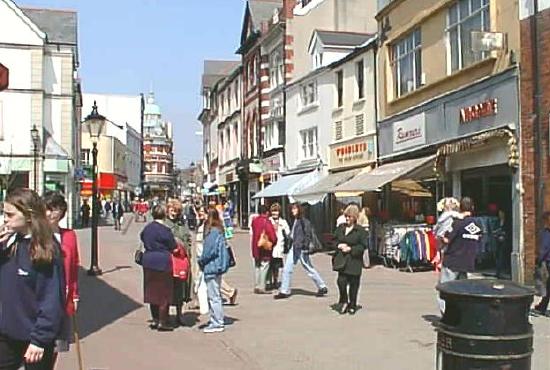
Above: Shoppers stand and gossip in the spring sunshine.
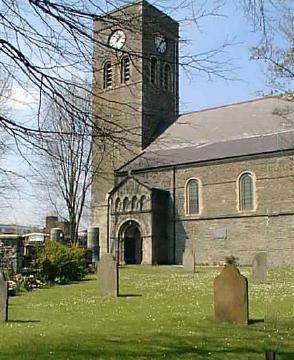 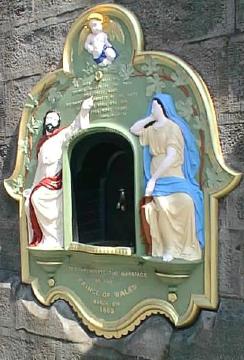
Above: St Tydfil's Church (left), the parish church of Merthyr Tydfil. A wall-mounted
public drinking tap (right) commemorates the marriage of the Prince of Wales (later
King Edward VII) to Princess Alexandra on 10 March 1863.
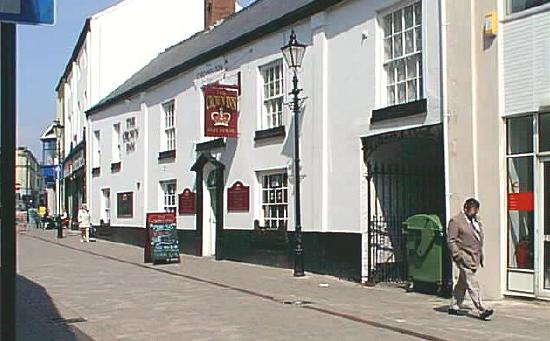
Above: The Crown Inn public house, built in 1785.
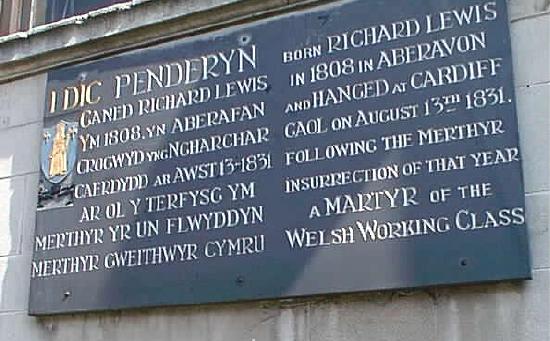
Above: A plaque outside the former Carnegie Library records the death of coalminer and local hero "Dic Penderyn" (real name Richard Lewis), executed for wounding a Scottish soldier during the month-long Merthyr Rising of 1831. He was actually born at Pyle, and not Aberavon.
Rebelling against cuts in pay and the lack of local and parliamentary representation, a crowd of 10,000 iron workers confronted 80 soldiers. In the ensuing riots, 16 soldiers were injured and at least 24 workers were killed and 70 injured. Dic Penderyn's last words on the gallows were 'O Arglwydd, dyma gamwedd' ('O Lord, this is an injustice'). Years after Dic was hanged, another man confessed to the wounding of the Scottish soldier. |
|---|
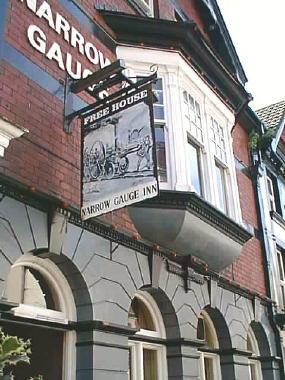
Left: The inn sign hanging outside the "Narrow Gauge Inn" public house.
The sign depicts the steam locomotive built by Richard Trevithick which, in February 1804, pulled the world's first steam-hauled train of wagons on the iron rails of the 9½ mile long Merthyr Tramroad.
On 21 February 1804, Trevithick wrote:
"...yesterday we proceeded on our journey with the engine; we carry'd ten tons of Iron, five wagons, and 70 Men riding on them the whole of the journey. Its above 9 miles which we perform'd in 4 hours and 5 mints, but we had to cut down some trees and remove some Large rocks out of the road. The engine, while working, went nearly 5 miles pr hour, there was no water put into the boiler from the time we started until we arriv'd at our journey's end. The coal consumed was 2 Hund'd. On our return home abt 4 miles from the shipping place of the iron, one of the small bolts that fastened the axel to the boiler broak, and let all the water out of the boiler, which prevented the engine returning until this evening."
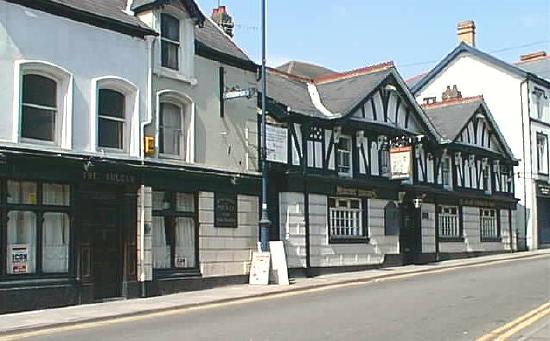
Above: Two public houses situated next door to each other.
On the left is "The Vulcan" and on the right "The Mercury Tavern".
Find out more about Merthyr Tydfil by visiting the websites below:
|



